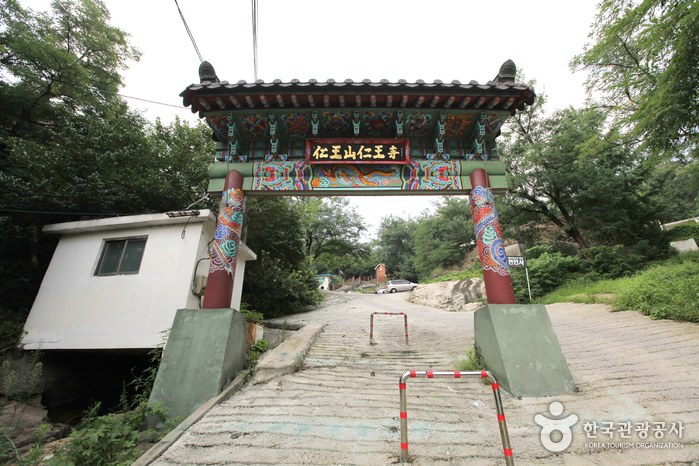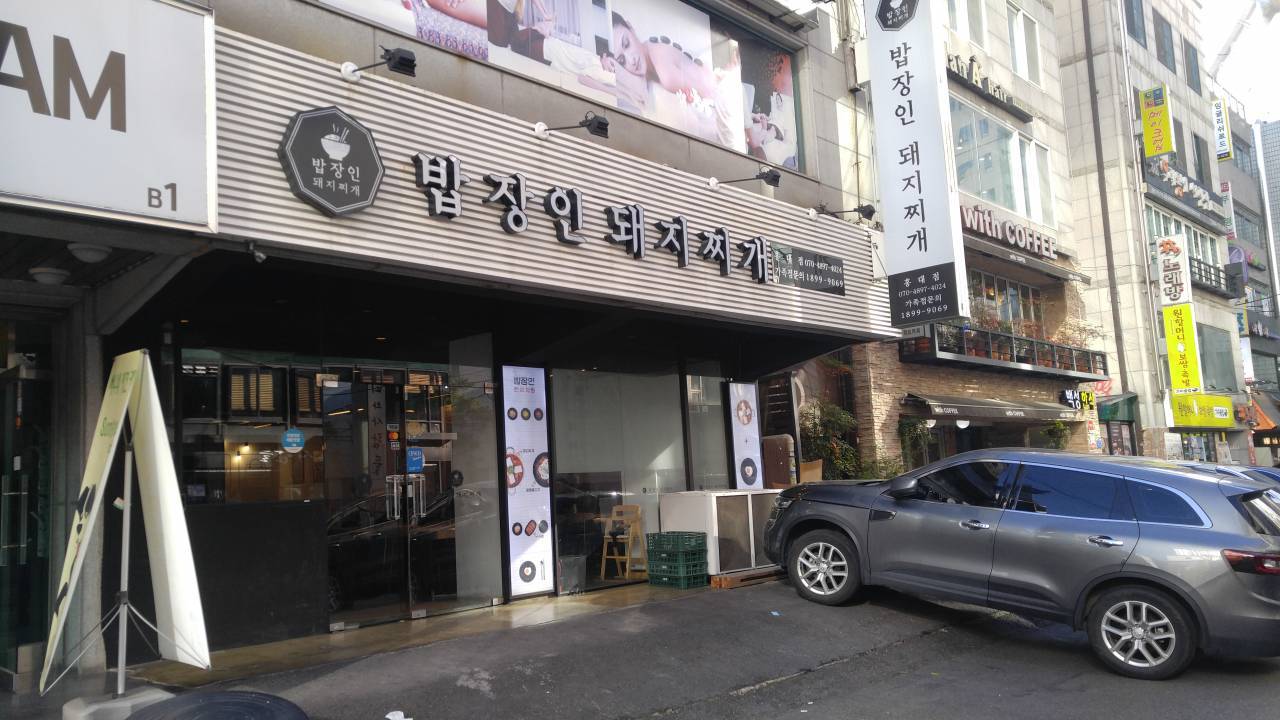Olive Young - Techno Mart Sindorim Branch [Tax Refund Shop] (올리브영 신도림테크노마트 [사후면세점])
13.6Km 2024-04-22
B1, a section of Store #45, #46, 97, Saemal-ro, Guro-gu, Seoul
-
E-Mart - Sindorim Branch [Tax Refund Shop] (이마트 신도림 [사후면세점])
13.6Km 2024-04-17
B2 Techno Mart, 97, Saemal-ro, Guro-gu, Seoul
-
Seodaemun Independence Park (서대문독립공원)
13.6Km 2022-12-15
251, Tongil-ro, Seodaemun-gu, Seoul
+82-2-3140-8305
Seodaemun Independence Park was built on the former Seoul Detention Camp. It was used to imprison thousands of Korean independence activists until the liberation from the Japanese occupation on August 15, 1945, as well as the political prisoners during the political turmoil in the 1960s. When the prison was moved to Uiwang-si, Gyeonggi-do in November 1987, the area was restored and turned into a memorial park in August 15, 1992 to honor the sacrifices of the martyrs. The park preserves seven prison buildings, an execution ground, underground women’s prison, and the March 1st Movement Monument that has been moved from Tapgol Park in Jongno.
One of the most significant monuments of the Seodaemun Independence Park is Dongnimmun Gate (Independence Gate), which has been designated a Historic Site. Nearby is Dongnipgwan (Independence Hall), originally called Mohwagwan, which was used to greet Chinese envoys during the Joseon dynasty. Today, the hall enshrines 2,327 tablets inscribed with the names of Koreans who died for the cause of national independence. Standing right next to Dongnimmun Gate are the remnants of Yeongeunmun Gate, another Historic Site. Other sights inside the park include the Patriotic Martyr Monument, Declaration of Independence Monument, and Statue of Dr. Seo Jae-pil, who was an independence activist and publisher of Korea’s first independent newspaper. The main highlight of the park is the Seodaemun Prison History Hall, a former prison building that was renovated into a history museum.
Inwangsa Temple (인왕사 (서울))
13.6Km 2020-04-02
16-1, Tongil-ro 18ga-gil, Jongno-gu, Seoul
+82-2-737-4434
Inwangsa Temple refers to the entire cluster of small Buddhist temples located on Inwangsan Mountain (alt. 338m) in the heart of Seoul. The eastern foot of the mountain has many scenic spots with its distinctively cozy and tasteful atmosphere, and the northern area called Mugye-dong also offers beautiful scenery. Inwangsa Temple was established in the early Joseon period (1392-1910) to guard the national palace Gyeongbokbung. The temple is comprised of 11 shrines from five different Buddhist orders. The unique design of each shrine adds pleasure to hikers on their way up to Seonbawi, an unusual rock formation that is a site of many folk beliefs and shamanist rites.
EW New Balance - Hongik Univ. Branch [Tax Refund Shop] (EW 뉴발란스 홍대)
13.6Km 2024-04-16
20, Hongik-ro, Mapo-gu, Seoul
-
Hongdae (Hongik University Street) (홍대)
13.6Km 2025-04-14
20 Hongik-ro, Mapo-gu, Seoul
Hongdae is a neighborhood known for its youthful ambience, with shops selling everything from clothing and cosmetics to living goods and books, as well as unique cafés and restaurants. The streets are also filled with buskers and dance performances, making a walk here quite entertaining. Special streets such as ateliers’ street (lined with private institutions for art students preparing for university entrance exams), Picasso’s Street, and Club Street are also must-go places for anyone hoping to fully experience the Hongdae area.
Bapjangin Dwaejijjigae(밥장인돼지찌개)
13.6Km 2020-11-02
16, Yanghwa-ro, 18an-gil, Mapo-gu, Seoul
+82-2-6052-1833
Lens Me - Hongdae Branch [Tax Refund Shop] (렌즈미 홍대)
13.6Km 2024-04-18
1F, 110-1, Eoulmadang-ro, Mapo-gu, Seoul
-
Troubadour - Hongdae Branch [Tax Refund Shop] (트루바두르 홍대)
13.6Km 2024-04-18
F1, F2 (Donggyo-dong), 137, Eoulmadang-ro, Mapo-gu, Seoul
-
National Memorial of Korean Provisional Government (국립대한민국임시정부기념관)
13.6Km 2023-01-16
279-24, Tongil-ro, Seodaemun-gu, Seoul
The National Memorial of Korean Provisional Government was established to shine a light on the proud history of the Korean Provisional Government's independence and the spirit of a democratic republic and to pass it on to future generations. The four-story memorial building with three underground floors houses three permanent exhibits, one special exhibit, Larchiveum, Symbol Plaza, storage, multi-purpose hall, and rooftop garden over a total area of 3,656 square meters, a total floor area of 9,703 square meters and a total exhibition space of 2,240 square meters. The permanent exhibits consist of a series of historic events from the March 1st Movement, which served as a turning point for the formation of the Provisional Government, to the foundation of the Korean Government that succeeded the mantle of the provisional government, while the special exhibit on the 1st floor currently hosts a special opening exhibition under the title of 『The Return of the Provisional Government of the Republic of Korea』. Moreover, a symbolic wall installation under the theme of "Waves of History" is displayed in the outdoor plaza on the 1st floor of the memorial expressing the Provisional Government’s desire for independence and the dynamics of the past, present, and future of Korea.
![Olive Young - Techno Mart Sindorim Branch [Tax Refund Shop] (올리브영 신도림테크노마트 [사후면세점])](http://tong.visitkorea.or.kr/cms/resource/02/2880202_image2_1.jpg)
![E-Mart - Sindorim Branch [Tax Refund Shop] (이마트 신도림 [사후면세점])](http://tong.visitkorea.or.kr/cms/resource/96/2880196_image2_1.jpg)



![Lens Me - Hongdae Branch [Tax Refund Shop] (렌즈미 홍대)](http://tong.visitkorea.or.kr/cms/resource/12/2889312_image2_1.jpg)
![Troubadour - Hongdae Branch [Tax Refund Shop] (트루바두르 홍대)](http://tong.visitkorea.or.kr/cms/resource/14/2889314_image2_1.jpg)
 English
English
 한국어
한국어 日本語
日本語 中文(简体)
中文(简体) Deutsch
Deutsch Français
Français Español
Español Русский
Русский